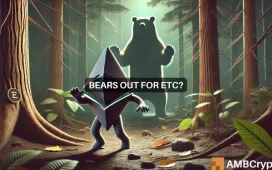Sometimes founders fall so deeply in love with their technology that they become blind to the other elements they need to create a commercially viable business.
I’ve been there. I’ve done that. And I’ve learned from it.
Back in 2013, I had the dream job—executive role, great salary, stability at a public company. But I still wasn’t satisfied. I felt my job had made me an optimizer when I was itching to get back to being a builder.
I had founded services businesses before—and two nonprofits that continue to this day—but I had never built a product company. I had just finished a project about video technology and saw the huge opportunity in artificial intelligence applied to video.
Next thing I knew, I was quitting my job. A friend introduced me to a technical cofounder. I found the use case literally in my backyard: gigabytes of family videos of my young kids, impossible to organize into precious little bits I could relive.
We fleshed out the application, using AI to automatically tag, categorize, and search videos so you could easily find priceless moments or create “automagic” highlight reels. (Remember, this was in 2013, before Google Photos leveraged AI or Apple Photos used facial recognition.)
We grew to a team of 10, and in less than three years, we launched an advanced AI-based video tagging solution—available as an application accessed through a browser or in an iPhone app. And we had users.
Perfect startup story? It turned out not to be. In the end, we made the tough—but right—decision to shut down the venture. Do I regret that time? No. The lessons I learned from Viblio were more valuable than spending three years in “optimizer mode.”
Our failure wasn’t about execution—it was about assumptions. Here are the three mistaken assumptions we made:
Feedback is sufficient to prove product-market fit
A common piece of advice for founders is to validate their idea by seeking early feedback from potential customers. So, we did that. We started with interviews with friends who fit our target audience. We widened the circle to interview people we met at events. We paid to survey a thousand people that fit different market segments we wanted to test out. We analyzed the data and included it in our pitch decks to show product-market fit.
It’s not that the advice we get as founders is wrong—it’s just truncated, incomplete, pithy.
Here’s the thing. People don’t like telling you to your face that your idea isn’t going to be big. Our efforts showed that people thought the tech was cool (because it was!). But that didn’t mean anyone would pay to use the application we wanted to build.
What I should have done is set up a presell campaign: a website describing our product and offering a deep discount if people prepaid for the promise of delivery in the future. That would have given us real data on whether our target audience saw enough value in our product to pay something—anything—for it.
If you can’t get buyer commitment, it’s product-market fit by luck.
More features will drive stickiness
It’s not that we didn’t have users. We operated on a freemium model, where people could use our service for free with the theory that we’d build more features later that would require a subscription.
It’s just that our users didn’t stay engaged on our platform. They uploaded their videos, they played with some of our features, and then they disappeared.
So, we added more features, starting with automagically-created highlight reels that we sent to our early users along with a call to action to create more themselves. We added a “face page,” where you could click on a face and we’d load all the videos we found that contained that face. We tried doing a lot of other things we thought were really cool. Nothing drove stickiness.
Turns out we were solving the wrong problem. We thought we were solving for stickiness—but we still hadn’t solved for product-market fit.
We can hire who we need
When we started Viblio, AI was exploding (and still is today, but in a completely different way). Google had just acquired DeepMind, and tech companies were hiring machine learning specialists at high six-figure salaries. Our seed money just didn’t cut it.
Neither my cofounder nor I had the natural ecosystem for the right tech people or target markets. We lucked out engaging a senior AI person and ended up hiring a straight-out-of-college machine learning engineer. But it was impossible to hire anyone else in that field. We did pretty well, but pretty well isn’t enough to build a company in a highly competitive field.
As an advisor to startups today, I think about the mistaken assumption we made—that we could just pay our way to the right team. People choose demanding high-risk journeys either because they are paid a lot or because they are following other people they want to follow. If you lack people in your ecosystem who are experts in your startup’s area of focus, you won’t likely pay your way to the team you need.
The value of failure
These three assumptions led us further and further away from realizing our true product-market fit. We eventually did hit on two markets that we could grow into: professional sports and adult film. With each, being able to categorize huge libraries of video and create highlight reels made sense. We saw some strong early traction in people uploading their adult films to our service.
But, alas, that wasn’t a business I wanted to spend 10 years in. And when I was honest with myself, neither was analyzing videos for the professional sports market. Both were markets where money was to be made. Neither were markets that I knew (or wanted to know) enough about, or was passionate enough about, to spend a decade of my life in.
And thus, I came to understand my biggest learning. The Silicon Valley hype of finding your product-market isn’t enough. You must have passion about the market you are playing in. You must understand it, and have an ecosystem of people you can draw from who are connected to it.
We shut down Viblio in 2016. But even though the company failed, the journey was not a failure. In three years, I learned more than I had in six years in executive enterprise roles. Building a company teaches you things you’ll never get from working safely. Among the many lessons from my failed startup, I have focused on three in particular that have made me successful in my subsequent roles:
- Do more with less. We built a functioning AI video platform on a shoestring budget. Most scaling companies fail because they learn to spend more and still end up not doing more!
- Prioritize ruthlessly. Everything feels necessary, but not everything matters. It’s hard to shut down something that seems cool, but if it’s not moving the needle, it has to go.
- As they say, “fall in love with the problem, not the solution.”
Read more:
The opinions expressed in Fortune.com commentary pieces are solely the views of their authors and do not necessarily reflect the opinions and beliefs of Fortune.








